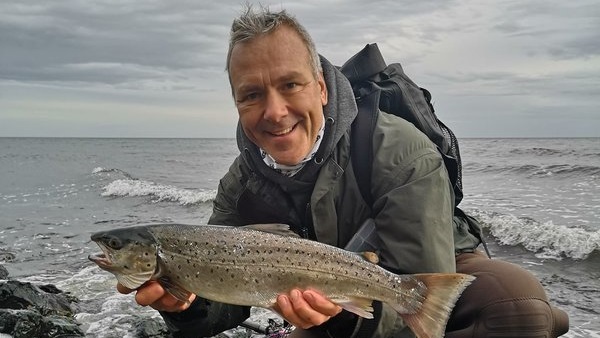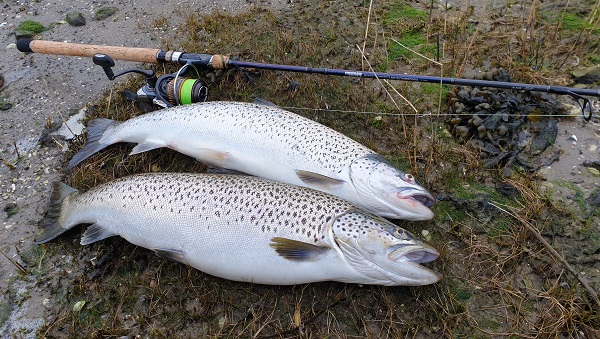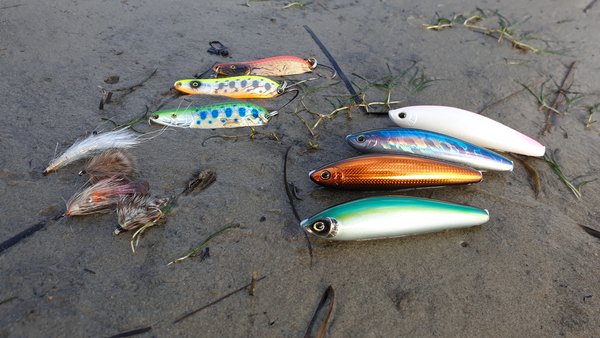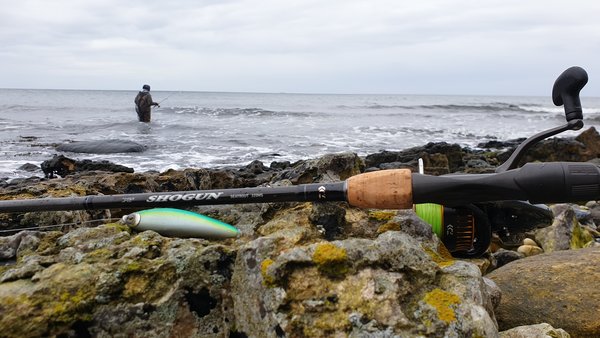HOT THIS MONTH
31.10.2019
November, Top season for coastal seatrout fishing
When you love fishing for seatrout like I do, summer really has its downsides. As the water gets hot, the trout swims to deeper and colder waters, and fishing for them can only be done at night. So when it finally gets colder, and the trout return to the shallow water, I am more than ready to get out there. Depending on weather, this period will range from late september to early december. The trout this time of year can roughly be put into 3 categories. First there are the colored fish, who are on the way to their spawning river. They are generally not focused on eating, but you do catch them now and then. I recommend releasing these fish to ensure the generations to come. Then there are the small trout, up to about 50 cm, that are not ready to spawn yet. They only have one thing in mind and that is eating. They roam the coast in shoals, and if you find them you can have a fun time. The last type is the gem that all fishers are dreaming about. It's the larger trout that for some reason is skipping a spawning period. These fish are eating machines and often in very good condition.
The techniques for fishing seatrout on the coast includes both flyfishing and spinning, and the combination of two, which is fishing with flies after a bombada. I'm not much into flyfishing myself, but must admit, that on some days they do catch fish, that won't go for a lure. On the other hand spinning really allows you to cover great areas, this due to the fact that you cast longer and can move faster. Also you are a bit less wind sensitive, which can be important in the fall in Denmark. The trout often move around in shoals, and while some areas on the coast can be quite empty, others can hold lots of fish. To find those areas it is very important to fish actively and cover as much coastline as possible, and I often end up walking 2-3 km in waistdeep water over a day. On the other hand, if you do find fish, stay a bit in the area as there are often more around.
The techniques for fishing seatrout on the coast includes both flyfishing and spinning, and the combination of two, which is fishing with flies after a bombada. I'm not much into flyfishing myself, but must admit, that on some days they do catch fish, that won't go for a lure. On the other hand spinning really allows you to cover great areas, this due to the fact that you cast longer and can move faster. Also you are a bit less wind sensitive, which can be important in the fall in Denmark. The trout often move around in shoals, and while some areas on the coast can be quite empty, others can hold lots of fish. To find those areas it is very important to fish actively and cover as much coastline as possible, and I often end up walking 2-3 km in waistdeep water over a day. On the other hand, if you do find fish, stay a bit in the area as there are often more around.


I use 2 setups for this kind of fishing. If I intend to focus on spinning I usually carry a 9' rod with a casting weight from 5 to 25 g. For many years the Tournament rodseries has been my favourite rod for that purpose, and it has never let me down. If I on the other hand want to fish with flies after a bombada, I use a rod that is a bit longer, as the line from bombada to the fly optimally is at least 3 meters. So to have a god control, a little extra length is nice. I just got my hands on the new Shogun Seatrout rod in a 3,2 m version with a casting weight of 10-35 g. and that works just perfectly with bombadas, and even quite well for normal spinning. Apart from that it's just one of the best looking rods I have ever seen. Super high quality components and a beautiful black finish - That rod is as close to the ultimate rod as you can get.
When it comes to reels for coastal fishing there is a few things to have in mind. First of all, you will be casting and retrieving hundreds of times over a day, so a reel (and rod) that is light weight is preferable. As I wrote before I often end quite a long way away from my car, which also means a long away from backup gear, so I need a reel that I can really rely on. Therefore I tend to use a little extra on the reel to get good quality. A reels worst enemy is the lack of oil, and getting dipped in salt water leaves both salt crystals and wash out oil. Standing in water to the waist, with waves smashing into you, there is no way to avoid getting the reel splashed with water, and that is why I would never consider a reel without the Mag Sealed bearing. It will add years to the reels lifetime. With the above in mind, I rely on Certate or Ballistic size 3000 reels for my fishing.
When it comes to reels for coastal fishing there is a few things to have in mind. First of all, you will be casting and retrieving hundreds of times over a day, so a reel (and rod) that is light weight is preferable. As I wrote before I often end quite a long way away from my car, which also means a long away from backup gear, so I need a reel that I can really rely on. Therefore I tend to use a little extra on the reel to get good quality. A reels worst enemy is the lack of oil, and getting dipped in salt water leaves both salt crystals and wash out oil. Standing in water to the waist, with waves smashing into you, there is no way to avoid getting the reel splashed with water, and that is why I would never consider a reel without the Mag Sealed bearing. It will add years to the reels lifetime. With the above in mind, I rely on Certate or Ballistic size 3000 reels for my fishing.


Line for this fishing is always braided, and even though you could go very low on diameter, if you look at strength, I use a 0,16. This gives me a bit of overhead, if I hit a rock or snag on some weeds. On the last 2 meters I use a tip of fluorocarbon with a diameter around 0,30 mm. That will give some extra invisibility near the lure, and also allow me to tie a dropper fly 50 cm above the lure.
In the fall the shallow waters are still packed with prey for the trout, and they are eager to gain as much weight before the winter as they can. You will find everything there ranging from small critters over shrimp, sticklebacks, gobys and sandeels to small herrings. Therefore you can use a wide range of baits to catch the seatrout and most days they will all work well. But some days the trout are zoomed in on a specific prey, and you will have to go through several lures to find out what works. My own preferred setup is a line through pencillure like the new Inline Lunker with a small brown dropper fly in front. Some days I catch most fish on the fly and other they only take the lure, but I generally think that I catch more by having both there.
Regards, Jorgen Harreby/ Team Angler, Team Daiwa Scandinavia
In the fall the shallow waters are still packed with prey for the trout, and they are eager to gain as much weight before the winter as they can. You will find everything there ranging from small critters over shrimp, sticklebacks, gobys and sandeels to small herrings. Therefore you can use a wide range of baits to catch the seatrout and most days they will all work well. But some days the trout are zoomed in on a specific prey, and you will have to go through several lures to find out what works. My own preferred setup is a line through pencillure like the new Inline Lunker with a small brown dropper fly in front. Some days I catch most fish on the fly and other they only take the lure, but I generally think that I catch more by having both there.
Regards, Jorgen Harreby/ Team Angler, Team Daiwa Scandinavia
HOT THIS MONTH BACK NUMBER
18.12.2024
Introducing Team Daiwa Ice Fishing Rods: Designed for Scandinavian Winters
28.11.2024
Cold Water Perch Fishing: A Guide for Open Water Enthusiasts
07.04.2024
BIG PIKE ON LAZY SHAD!
29.09.2020
OCTOBER - DAIWA BAITJUNKIE
10.08.2020
AUGUST - TATULA TWS 300, coming soon
01.06.2020
JUNE - SOMMARGÄDDAN 2020
27.04.2020
MAY - Story of Bechhold Flashers
01.04.2020
APRIL - Tricks for pre-spawn pikefishing by Ari Paataja
09.03.2020
March - Spring is in the air and salmons are waiting…
31.01.2020
February - 20 SALTIGA BREAK YOUR RECORD
23.12.2019
January - PikeMaster with Ruoto 2020
29.11.2019
December – Daiwa Balance Jig for ice fishing

